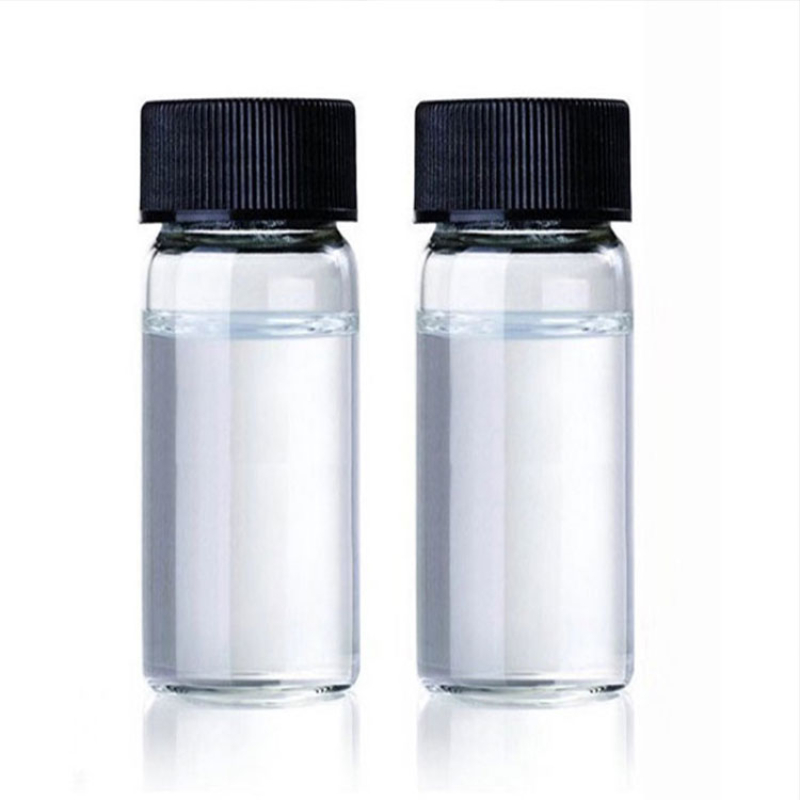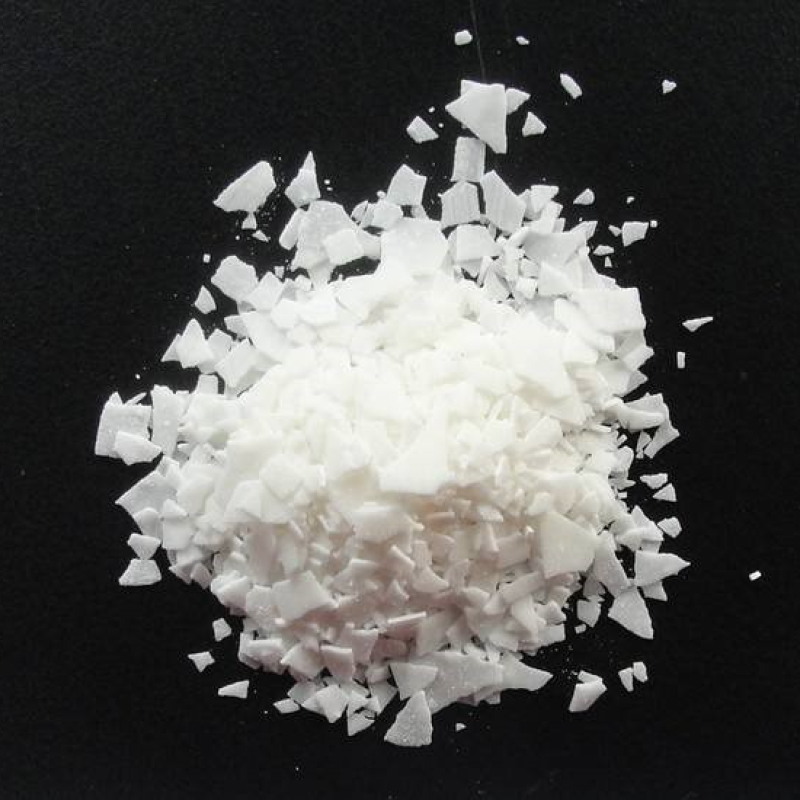Products Description of Magnesium oxide CAS#1309-48-4Magnesium oxide is commonly known as magnesia, also known as magnesium oxide. It is a typical alkaline earth metal oxide with the chemical formula MgO. It is a white powder with a melting point of 2852℃, a boiling point of 3600℃ and a relative density of 3.58 (25℃). It is soluble in acid and ammonium salt solutions. It reacts slowly with water to form magnesium hydroxide. It can be dissolved in a carbon dioxide aqueous solution to form magnesium bicarbonate.
Contact Now
Products Description of Antimony triacetate CAS#6923-52-0Antimony(III) acetate is an antimony compound with the chemical formula Sb(CH3CO2)3.
Contact Now
Products Description of Cadmium oxide CAS#1306-19-0Cadmium oxide is an oxide of cadmium with the molecular formula CdO, which is carcinogenic. Cadmium oxide can dissolve in acid to form Cd[H2O]62+; it can also dissolve in alkali to form [Cd(OH)4]2??.Cadmium oxide Chemical PropertiesMelting point 900°CBoiling point 1385 °Cdensity 8.15 g/mL at 25 °C(lit.)storage temp. Store below +30°C.solubility 0.0021g/lform powdercolor brownSpecific Gravity8.15OdorOdorlessPH9-10 (H2O)(aqueous suspension)Water Solubility insoluble.
Contact Now
Aluminum Oxide CAS#1344-28-1 The oxide of aluminum is Al2O3. The natural crystalline mineral is called corundum, but the synthetic crystals used for abrasives are designated usually as aluminum oxide or marketed under trade names. For other uses and as a powder, it is generally called alumina.
Contact Now
Products Description of Direct Ferric oxide CAS# 1309-37-1Iron oxides are produced synthetically and consist essentially of anhydrous and/or hydrated iron oxides. The range of hues includesyellows, reds, browns and blacks. Food quality iron oxides are primarily distinguished from technical grades by the comparatively low levels of contamination by other metals. This is achieved by the selection and control of the source of iron and/or by the extent of chemical purification during the manufacturing process.
Contact Now
Products Description of Cupric oxide CAS#1317-38-0Copper oxide is an inorganic substance with the chemical formula CuO. It is a black oxide of copper, slightly amphoteric and slightly hygroscopic. Insoluble in water, easily soluble in acid, stable to heat, and decomposes into oxygen at high temperatures. It can be reduced to metallic copper by introducing hydrogen or carbon monoxide at high temperature. Copper oxide is heated in Chemicalbook air and releases oxygen at about 1050°C and is reduced to cuprous oxide.
Contact Now
Products Description of Lead Oxide CAS#1317-36-8Lead oxide is an inorganic substance with the chemical formula PbO. It is a yellow crystalline powder. It is insoluble in water and ethanol, but soluble in nitric acid, acetic acid, and hot alkali solution. It is mainly used as a pigment, metallurgical flux, paint drier, rubber vulcanization accelerator, pesticide, etc.On October 27, 2017, the World Health Organization's International Agency for Research on Cancer published a preliminary list of carcinogens for reference.
Contact Now
Products Description of Cupric oxide CAS#20427-59-2Chemical formula Cu(OH)2. Molecular weight 97.56. Blue to blue-green gel or light blue crystalline powder, toxic. Relative density 3.37. Color darkens at 60-80℃. Insoluble in cold water, decomposes into copper oxide in hot water, dissolves in acid to form divalent copper salt, dissolves in excess concentrated alkali to form tetrahydroxy cuprate, dissolves in concentrated ammonia or potassium cyanide solution to form dark blue tetraamminecopper(II) dihydroxide solution or colorless potassium tetracyanocuprate(II) solution.
Contact Now
Products Description of Chromium(VI) oxide CAS#1333-82-0Chromium trioxide is an inorganic compound with the chemical formula CrO3. It is a dark red or dark purple crystalline powder. It is soluble in water, sulfuric acid, nitric acid, ethanol, ether, acetic acid, and acetone. It is mainly used in electroplating industry, pharmaceutical industry, printing industry, tanning and fabric mordant dyeing.On October 27, 2017, the World Health Organization's International Agency for Research on Cancer published a preliminary list of carcinogens for reference.
Contact Now
Products Description of 4-Methylmorpholine N-oxide CAS#7529-22-8N-methylmorpholine oxide (NMMO) solvent is a special excellent solvent with extremely strong solubility for cellulose. It is a crystalline solid or liquid at room temperature, non-toxic, weakly alkaline, and highly hygroscopic. Each molecule can combine with multiple water molecules. It is easy to produce a color change reaction at 120°C, and an overheating reaction at 175°C and is easy to gasify and decompose.
Contact Now
Products Description of Methylcyclopentadienyl manganese tricarbonyl CAS#12108-13-3Methylcyclopentadienyl manganese tricarbonyl, a metallic manganese compound. Combustible, highly toxic, decomposes into toxic manganese oxide fumes in fires.
Contact Now
Products Description of Lantanium Nitrate CAS#10277-43-7Lanthanum nitrate hexahydrate is a colorless crystalline solid with a distinctive nitrate odor. - It is relatively stable at room temperature, but can decompose when heated to produce toxic nitrous oxide gas.
Contact Now
Products Description of 2,2,6,6-Tetramethylpiperidinooxy CAS#2564-83-22,2,6,6-Tetramethylpiperidinyl oxide, abbreviated as TEMPO, is a piperidine-type nitrogen oxide free radical. TEMPO is an orange-red, easily sublimable crystal or liquid, and is easily soluble in solvents such as water, ethanol, and benzene.
Contact Now
Products Description of Bismuth trioxide CAS#1304-76-3Yellow monoclinic crystals. Soluble in acid, insoluble in water and alkali. Can be reduced by carbon and hydrogen. Made by heating and decomposing bismuth nitrate. Used to make metallic bismuth, catalysts and bismuth oxide superconductors.Bismuth oxide is also known as "bismuth trioxide". Pure products include α-type, β-type and δ-type. α-type is yellow monoclinic crystal with a relative density of 8.9 and a melting point of 825℃. It is soluble in acid but insoluble in water and alkali.
Contact Now
Products Description of Direct Pigment Yellow 42 CAS#51274-00-1Pigment yellow 42, also known as Yellow Iron oxide is a yellow powder in the form of an alkaline oxide with comparatively stable chemical properties. It is is insoluble in water and alcohol, slightly soluble in acids but completely dissolves in concentrated hydrochloric acid. When heated to 80℃, it loses water and converts to red ferric oxide. It is used in coating, printing ink and paint, and also as a coloring agent for building material, rubber and paper-making.
Contact Now
Products Description of Tetrahydropyran CAS#142-68-7Tetrahydropyran, also known as oxadiazine, is a six-membered oxygen-containing saturated heterocyclic ring. It is a colorless, flammable liquid at room temperature with a special smell. It is miscible in water, ethanol, ether, and other organic solvents. It generates explosive organic peroxides under light. It is prepared by hydrogenation of dihydropyran in the presence of Raney nickel or reaction of 5-dibromopentane and water in the presence of zinc oxide.
Contact Now
Products Description of CREMOPHOR (R) A25 CAS#68439-49-6CETETH25 is a nonionic emulsifier obtained by adding natural saturated fatty alcohol and ethylene oxide. CETETH25 (HLB15-17) is an oil-in-water (O/W) emulsifier. When used together with CETETH6, it forms a pair of complementary emulsifiers. The emulsifier pair has a small amount of use and a strong emulsification ability. The prepared emulsion products have high stability and bright appearance. It can tolerate a certain degree of inorganic salts and extreme pH conditions.
Contact Now
Products Description of Dodecylamine CAS#124-22-1Dodecyl primary amine is also known as 1-aminododecane, laurylamine, and dodecylamine. It is colorless or white crystal. This product is weakly alkaline and can form salts with inorganic or organic acids. Can be quaternized. Reacts with ethylene oxide and can be acetylated. Chemicalbook can be added to unsaturated hydrocarbons. This product can be oxidized with peroxide. Reacts with halogenated carboxylic acids to generate amphoteric compounds. Reacts with carboxylic acid chloride to generate amides.
Contact Now
Products Description of DDAO CAS#2605-79-0N,N-Dimethyldecyl-N-amine oxide is an organic compound with a chemical formula of C12H27NO and a molecular weight of 201.35.DDAO Chemical PropertiesMelting point 70 - 73°Cdensity 0.996 g/mL at 20 °Cvapor pressure 0Pa at 25℃refractive index n20/D 1.337storage temp. 2-8°Csolubility Chloroform (Slightly), Methanol (Slightly)form Solidpka4.79±0.40(Predicted)color White to Off-WhiteWater Solubility 409.5g/L at 30℃BRN 2352550InChIKeyZRKZFNZPJKEWPC-UHFFFAOYSA-NLogP0.95 at 20℃CAS DataBa
Contact Now
Products Description of Lead monoxide CAS#1317-36-8Lead oxide is an inorganic substance with the chemical formula PbO. It is a yellow crystalline powder, insoluble in water, insoluble in ethanol, soluble in nitric acid, acetic acid, and hot alkali. It is mainly used as a pigment, metallurgical flux, and paint drier.
Contact Now
Products Description of Magnesium carbonate hydroxide CAS#39409-82-0This product is white monoclinic crystal with a relative density of 2.254. It is slightly soluble in water and easily soluble in dilute acid. It will foam and decompose in acid to release carbon dioxide. It will generate magnesium oxide and carbon dioxide when heated and calcined.Magnesium carbonate hydroxide Chemical Propertiesdensity 2.16RTECS FG1797000storage temp. 2-8°Cform Solidcolor WhiteOdorat 100.00?%. odorlessWater Solubility Soluble in water.
Contact Now
Products Description of Trimanganese tetraoxide CAS#1317-35-7Manganese tetraoxide is a black tetragonal crystal, also known as manganese pyroxene, black manganese ore, and active manganese oxide. It is calcined into crystals and belongs to the spinel class. It is an important industrial raw material.Manganese tetraoxide is mainly used in the electronics industry and is a raw material for producing soft ferrites. Soft ferrites are made by sintering and molding manganese, zinc, and iron oxides in a certain ratio.
Contact Now
Products Description of Copper (II) Nitrate Hydrate CAS#10031-43-3Copper nitrate trihydrate is a white powder, easy to deliquesce, easily soluble in water, with a solubility of 45g at 0℃. It can be reprecipitated by adding concentrated nitric acid. It decomposes into nitrogen oxides and copper oxide when red hot, and is decomposed by hydrochloric acid. Common hydrates are hexahydrate Cu(NO3)2·6H2O and trihydrate Cu(NO3)2·3H2O. The former is a blue crystal with a relative density of 2.074.
Contact Now
Products Description of LDAO CAS#1643-20-5This product is colorless or light yellow transparent liquid, with a relative density of 0.98 at 20°C. Easily soluble in water and polar organic solvents, slightly soluble in non-polar organic solvents and showing non-ionic or cationic properties in aqueous solutions. When the pH value is <7, it is cationic. Amine oxide itself is an excellent detergent and can produce stable and rich foam.
Contact Now

































